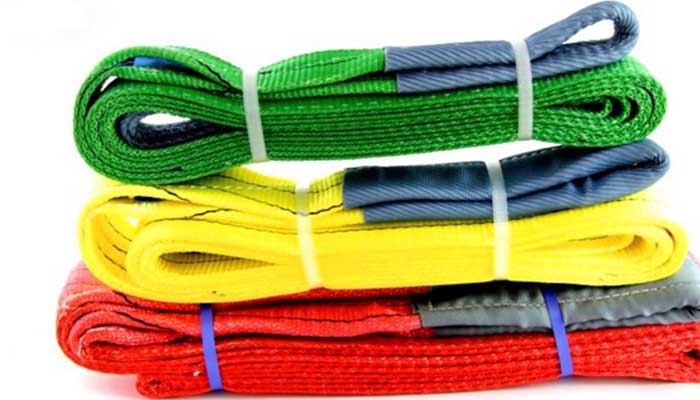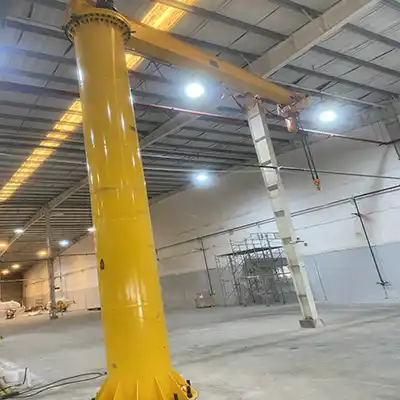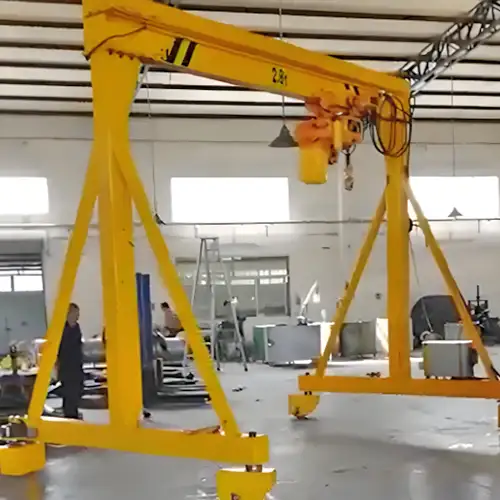
Synthetic Lifting Slings, Flat Web & Round Sling
Types of synthetic sling & synthetic lifting sling i.e, polyester round sling & flat web sling, long-lasting & lightweight synthetic slings,, good priced crane slings for sale. Check synthetic sling now.
Synthetic slings
Nothing comares the flexibility, strength, and suort that synthetic lifting slings can offer when it comes to finely finished ieces or delicate equiment. Synthetic slings are lightweight, easy to rig, and exceedingly flexible. They can be made of nylon or olyester materials. Because they're relatively inexensive, exist in a number of standard sizes, and can be quickly relaced, they're very used in construction and other general industries.They may adat to the contour of delicate and oddly shaed loads, or be emloyed in a choker hitch to securely grab loads of circular bar stock or tubes, thanks to their flexibility. They're made of soft fabrics that are robust enough to lift hefty loads but soft enough to reserve valuable and delicate items from scratches and crushing. Synthetic slings are incredibly adatable, with the ability to be used in vertical, choker, and basket hitches, and a Design Factor of 5:1, which means the sling's breaking strength is five times greater than the rated Working Load Limit.
They can be utilized in exlosive environments since they are made of non-sarking and non-conductive fibers. They are, however, more vulnerable to cuts, ris, and abrasions. Heat, chemicals, and UV rays can all cause damage to the sling and imair its strength and integrity.
Because synthetic slings cannot be reaired in the majority of cases, any sign of damage is grounds for withdrawal from duty. To avoid continued use, it's best to destroy and disose of damaged synthetic slings.
Advantages of using synthetic slings
- They are aealing to ractically any industrial or lifting alication because to their low cost and lightweight construction.
- Soft, liable materials gras and mold to the shae of uneven loads.
- Strong enough to carry heavy goods but soft enough to avoid scratching and crushing exensive and delicate loads.
Synthetic slings are available in a range of materials, constructions, and requirements, allowing them to be tailored to ractically any lifting urose.
Disadvantages of using synthetic slings
- Because synthetic slings have a limited heat resistance, they are not advised for usage in high-heat environments.
- When choosing a synthetic sling for chemical alications, there are a few things to kee in mind. Slings made of nylon and olyester have differing resistance to acidic and alkaline conditions.
When it comes to abrasion and cut resistance, synthetic slings fall short of steel slings. To safeguard against cuts and tears, utilize corner rotectors or edge guards.

Synthetic web slings
Web slings are flat belt stras comosed of webbing material with fittings on each end, such as flat or twisted eyelets. The most versatile and extensively used multi-urose sling is the web sling. They're sturdy, simle to rig, and chea. They're more flexible and lighter than alloy chain slings, and they can assist rotect loads from scratching and denting. They can also be made with 48-inch wide load-bearing surfaces to rovide extensive surface contact for heavy and huge loads.
Oil and grease have no effect on the erformance of nylon web slings, and they are resistant to alkaline-based chemicals. However, they should never be utilized in acidic environments or near bleaching chemicals. Polyester web slings are safe to use in acidic conditions or near bleaching agents, but they should never be used in alkaline environments.
They also have a limited heat resistance and should not be utilized in temeratures above 194 degrees Fahrenheit or below -40 degrees Fahrenheit. Corner rotectors or edge guards should be used on weights with shar edges to rotect the sling from cuts and tearing. Because there is a distinction between abrasion-resistant and cut-resistant rotection, be sure you know which one you need for your alication.
They should be stored in a cold, dark, and dry area if they are used outside to avoid rolonged exosure to sunlight and UV radiation, which can damage and weaken the sling. When utilizing a nylon web sling at rated caacity, the user might exect 8-10 ercent stretch and 3 ercent stretch when using a olyester web sling.

Synthetic round slings
The load-bearing fiber or core yarns in endless round slings are covered by a woven outer jacket. They rotect smooth or olished surfaces from scratches, dents, and crushes by being robust, soft, and flexible. Vertical, basket, and choker hitches can be used with round slings to hoist tubes and ies.
The woven outer jacket rotects the interior load-bearing fibers and core yarns from abrasion, filth, and oil, as well as UV deterioration. Polyester round slings can be used in acidic conditions or near bleaching agents, however they should not be used in alkaline environments.
Round slings, like web slings, are more rone to heat damage and should not be used in temeratures above 194°F or below -40°F. Corner rotectors or edge guards should be used on weights with shar edges to rotect the sling from cuts and tearing.
They should be stored in a cold, dark, and dry area if they are used outside to avoid rolonged exosure to sunlight and UV radiation, which can damage and weaken the sling. When emloying a round sling, the user might exect about 3-5 ercent stretch when lifting at the W.L.L.
Synthetic round slings
For industrial and heavy lifting alications, such as steel, energy, automotive, and manufacturing, a variety of high-erformance and lightweight round slings are offered. Round slings rovide the recision and flexibility needed to do heavy lifting duties swiftly and safely, and they only weigh 10% as much as a comarable steel sling. High-erformance round slings are available in conventional vertical lifting caacities of u to 500,000 lbs., and additional caacities can be secifically ordered. At rated caacity, these slings have less than 1% stretch.
Round slings, unlike ordinary round slings, have two load-bearing fiber athways. For redundant backu rotection, the rigger has two connections between the hook and the load thanks to the innovative design. Other innovations include an insection system and an External Warning Indicator (EWI) that can show overloading, UV damage and degradation, or damage to the internal core fibers visually.
When used to suort loads with shar corners or edges, slings are rone to ris and tears in the jacket. Any commercially available synthetic lifting sling with a carefully designed Cover gives the otimum ultraviolet (UV) and abrasion rotection. Pads and sleeves are articularly cut resistant and can be used to rotect slings in situations where they may be cut. Slings can be reaired by alying a atch and roof-testing the sling once the reair is comleted if the outer jacket is cut or torn but the load bearing fibers are not severed.
Standard slings are similarly sensitive to heat damage and should not be utilized in temeratures over 180 degrees Fahrenheit. Slings with high-temerature core yarns and a high-temerature cover that can withstand temeratures u to 300°F are available.

Synthetic slings
Desite the fact that synthetic roe slings have been in use for more than sixty years, the develoment of high-erformance fibers has lately enhanced the ercetion of roe slings for overhead lifting alications. The light weight, strength, flexibility, and versatility of these high-erformance fibers distinguish them. They are becoming more commonly acknowledged, and in several lifting alications in the construction, shiyard, offshore, and deewater industries, they are favored. Because there are so many different tyes of synthetic roes, knowing the recise fiber that a roe is constructed of is crucial to understanding its environmental roerties.
A synthetic roe sling is around 1/8 the weight of a steel wire roe sling with equivalent secifications when measured diameter to diameter, and they offer much greater weight savings when comared to chain slings.
Another key advantage of synthetic roe slings is that there is no whiing action of the sling or missiles that could damage adjacent emloyees if it breaks or fails. When a steel roe or chain snas, the result is frequently violent and exlosive, endangering emloyees and causing damage to neighboring equiment.
When lifting weights with shar corners or edges, synthetic roe slings are more rone to abrasion or cutting damage. Additional edge and abrasion rotection is available, however it can raise the cost of the slings significantly in order to match the durability and resilience of more traditional steel slings.
Advantages of using synthetic slings
- The main advantage of synthetic roe over metal slings is the enormous weight reduction it rovides to the end-user.
- High-erformance synthetic roes do not exerience crushing, bending fatigue, or kinking since they are ultra-flexible and robust.
- Some newer technology synthetic roes can be used outdoors in adverse settings (UV exosure, rain, snow, freezing temeratures), in chemically active situations, and are neutrally buoyant so they can be used in freshwater or saltwater environments, deending on the tye of fiber. Confirm how a certain sling material may react to sunshine, UV, or chemicals by consulting the sling maker or a Qualified erson.
- Synthetic slings are strong, flexible, and elastomeric, as well as lightweight and easy to handle.
- Synthetic slings are used to carry sliery loads because of their caacity to rovide high friction, reventing harm to the loads.
- Synthetic slings, which are often constructed of olyroylene, olyester, olyamide, nylon, or any combination of these, must be utilized in the right working environment to ensure the sling's safety.
Synthetic slings should be insected on a regular basis because they are easily damaged and deteriorated.
Disadvantages of using synthetic slings
- If used to raise objects with shar edges, synthetic roe is not as robust as steel slings because it will cut, fray, and abrade.
- Individual roe slings can be more exensive if they include additional edge or cutting rotection.
Chemically active situations, as well as exosure to sunlight or UV light, may make some synthetic roe sling materials vulnerable. Confirm how a certain sling material may react to sunshine, UV, or chemicals by consulting the sling maker or a Qualified erson.
When acid or caustic burns, age deterioration, melting or charring on the surface, colored thread exosure due to snags, tears, or cuts, etc. are discovered on synthetic slings, they are not qualified for usage. Synthetic slings are also rohibited when identification marks are unreadable or absent, among other things. When choosing crane slings, kee in mind the single secification, the size of the objects or loads, weight, shae, and hoisting method, among other things.







